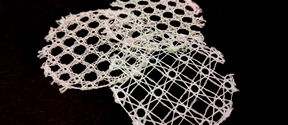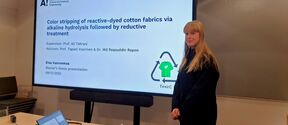A year in space! The Suomi 100 satellite has taken pictures of the atmosphere and auroras as well as studied space weather

The Suomi 100 satellite, which was built to mark the centenary of Finnish independence, was launched into space on 3 December 2018 as part of the payload of a Falcon 9 rocket.
The launch was delayed by a year because of problems with the rockets. The satellite's journey in space has nevertheless proceeded very well.
‘The year has been exciting and full of work and we are very pleased both with the operations of the satellite and the observations it has made’, says the leader of the project, Professor Esa Kallio.
Suomi 100 circles the Earth at an average height of 575 kilometres and its orbit that takes it over the polar regions each time. For this reason, the satellite is often over Finland, allowing it to make observations of Finland. It is also possible to contact it directly from the Aalto University’s ground station in Otaniemi.
After the testing phase that followed the launch, the satellite got quickly to work using two instruments to make observations – its camera and its radio spectrometer, an instrument designed and built at Aalto University. The first pictures were day pictures that are easier to take and to interpret.
‘We were also able to utilise the slow rotation of the satellite. This allows a single camera to take pictures in many directions from the same location and to link them to compose panorama pictures. Pictures were taken of places including Finland, Venice, and the Outer Hebrides. After the daytime pictures we started photographing at night – stars and the Moon’, Kallio says.

Space sounds
After the photography phase of a couple of months the satellite team started taking measurements with the radio spectrometer. The radio spectrometer listens to ‘space sounds’, or radio waves that give information on how the Sun affects the Earth and its near space.
The radio instrument has also been used for making active measurements utilising radio transmitters on earth. The hope is that these measurements will make it possible to gain a greater understanding for the Aurora Borealis and its behaviour. Radio measurements give information on both temporal and local changes in near space. The interpretation of the radio instrument’s measurements will become easier as the amount of material grows.
‘Making radio measurements will be the main task of the second year of Suomi 100. The orbit of the satellite will make it possible to take measurements for more than ten more years. Hopefully the satellite will have many happy birthdays ahead of it!’ says Professor Esa Kallio.

The Suomi 100 is Aalto University's third satellite. Aalto University's partner in the satellite project is the Finnish Meteorological Institute, which helped produce the satellite's computer software and instruments, and is also involved in the scientific research programme.
‘The Suomi 100 satellite has already produced many interesting observations and there is more to come. Much research work remains to be done’, says Ari-Matti Harri, a research professor at the Finnish Meteorological Institute
Further information:
Professor Esa Kallio, Aalto University
tel. +358 50 420 5857
esa.kallio@aalto.fi
Research Professor Ari-Matti Harri, Finnish Meteorological Institute
tel. ´+358 50 337 5623
ari-matti-harri@fmi.fi

Read more news

Smart textiles are reshaping our understanding of materials – and interspecies communication
The PAST-A-BOT research project, funded by the European Research Council (ERC), is developing soft, intelligent textiles that could one day function as rescue robots, sound-sensing agricultural fabrics, or assistive clothing. At the same time, the project aims to rethink the way we approach materials research.
Master’s student showcases efficient color stripping of cotton fabrics
On December 9, master’s thesis student Elsa Vuorenmaa from the Textile Chemistry Group presented the results of her research on color stripping of reactive-dyed cotton fabrics.
Future makers research batteries, cryptography and plastic recycling
The Technology Industries of Finland Centennial Foundation awarded 3.5 million euros in research funding to eight projects, five from Aalto University.






